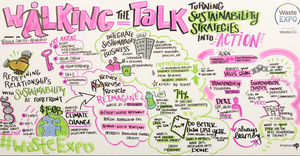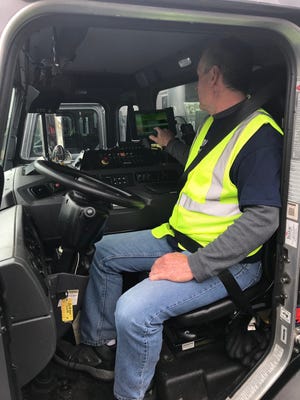RECYCLING: NERC Bytes into E-Waste
April 1, 2002
Rebekah A. Hall
Computers and other electronic goods weren't always discarded like a pair of worn socks. But with technology constantly being upgraded, concerns about e-waste piles are growing.
To alleviate the problem, the Northeast Recycling Council (NERC), Brattleboro, Vt., last fall, developed a guide and conducted electronic collection workshops. According to NERC, it hoped to stimulate and develop e-waste markets, which includes items such as TVs, monitors and old computers. Both the manual and workshops were funded by the Environmental Protection Agency, Washington, D.C., and provide tips on operating effective electronics recycling programs.
Included in the guide, “Setting Up and Operating Electronics Recycling/Reuse Programs: A Manual for Municipalities and Counties,” are answers to questions concerning e-waste recycling, details about setting up a collection program and case studies of successful e-waste recycling programs.
“It's comprehensive and answers questions for people who are curious about public electronics collections,” says NERC Program Manager John Leigh about the guide. “It [explains] soup to nuts how to perform a broad e-waste strategy.”
The manual also includes the results of NERC's national electronics collection program survey, which was conducted between April and September 2001. The survey describes e-waste collection programs across the country, quantifying their costs, volumes, participation rates and program efficiencies.
For example, approximately 30 of the 50 states have e-waste collection programs. Of those 30, 45 percent of e-waste is collected through special events, 47 percent is collected through ongoing drop-off programs and 8 percent through curbside collection.
Recycling costs vary by state, the manual states. For example, while North Carolina's average recycling fee is $168 per ton and prices go as high as $351 per ton, the state's lowest rate is $0 per ton because the e-waste program uses a company that, until recently, repaired, remanufactured and resold equipment for free. The company now charges for cathode ray tube (CRT) disposal. However, Pennsylvania's average recycling fee ranges from a low of $350 per ton to a high of $1,180 per ton. The state average recycling fee is $765 per ton.
Other valuable survey information includes how programs are funded. Overall, 29 percent of e-waste programs are funded by grants, 35 percent by user fees, 76 percent by budgets and 31 percent by a combination of those options, NERC says.
Costs to establish and continue operating an e-waste collection program also vary. Expenses can include staff's time, supplies, equipment and permitting, and with the exception of large cities such as Los Angeles, average set-up costs are $3,086, according to the manual. Forty-four percent of the programs report setup expenses of approximately $1,000, the study says.
Additionally, population and program type, such as a special event, ongoing drop-off site, or curbside pickup, can affect costs. Generally, operational costs are approximately $10,700 for special event programs; $25,000 for ongoing collection programs; and $21,600 for curbside collection programs, according to the study.
When starting an e-waste collection program, the guide recommends that cities or counties answer the following questions:
Why begin a collection program? Is it due to state laws or policy regulation changes?
What materials will the program collect? NERC recommends targeting CRT collection, no matter what program is chosen. Other items to consider include computer components, any equipment with a circuit board or items with a plug, such as curling irons, lamps, microwaves, etc.
What legal requirements must be satisfied? When disposing of CRTs, the guide suggests checking with state environmental agencies about state regulation requirements, which may differ from federal requirements. In general, be aware of federal, state and local laws.
Who will manage the program? Is the solid waste manager available to operate the program? If not, then who? Also, consider a municipality's resources, such as storage, labor, trucks, etc. Can the municipality work with community partners? Partners include the private sector, such as haulers, electronics manufacturers, repair shops, etc.
What is the fate of collected CRTs? The guide states that there are four basic options for e-waste: lead smelter; glass-to-glass recycling; reused or resold; and exported. Exporting is becoming a popular option, although the manual says there is little information about e-waste's fate once it is exported to foreign countries. However, it is believed that e-waste sent to Mexico and Russia is repaired and reused.
How can expenses be minimized? NERC says the cost areas to examine include staff, publicity and outreach, transportation, and recycling fees. Controlling budgets means knowing how much each of these four areas will cost and allowing for unexpected expenses.
Additionally, the guide discusses how to choose a collection program and details program planning, publicity and implementation.
Following its manual, NERC workshops, most recently held in Boston and Schenectady, N.Y., informed attendees how to begin an e-waste collection program, discussed how municipalities can influence product stewardship and addressed community concerns and questions.
“The goal of the workshops was to make it easier for local government officials who are setting up their own electronics [collection] programs,” Leigh says. “Those whoy are considering electronics collection for their residences [can] learn from the experiences of those who have already embarked on this path.”
In the future, NERC hopes to follow-up with its survey and is proposing additional workshops this summer.
You May Also Like


